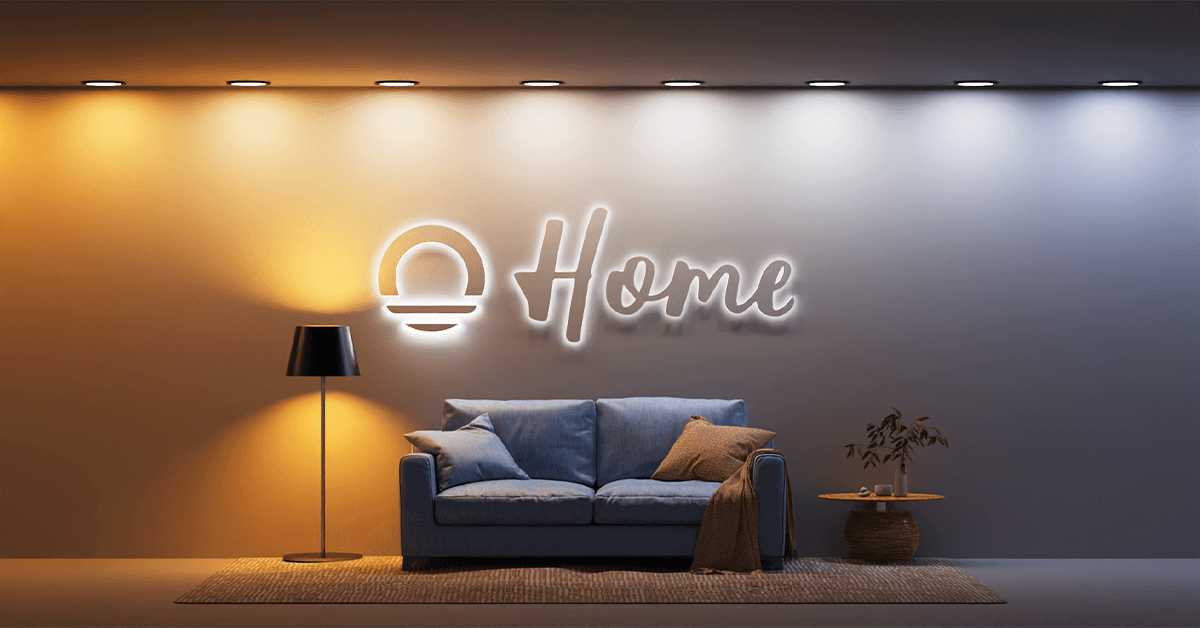01 Cool Light vs Warm Light
There are several options when trying to determine which lighting truly reflects your personality.
One of the latest innovations in lighting is the use of color psychology to help control the feel of your home, a technology made easier to use by the rise of color-changing smart lights.
Another option is to use color temperature to adapt to your desired design scheme. Color temperature is not new to the interior decorating industry. In fact, choosing the right light is always one of the most important steps.

One very critical aspect of lighting is the color of light produced by the fixture, which ranges from pale yellow (warm) to light blue (cool).
In the past, warm color temperatures could only come from incandescent bulbs and candles, while fluorescent and LED lights produced cool color temperatures.
With advances in lighting technology, you can now find many lights, from incandescent bulbs that emit a cool blue light to LEDs that emit a warm yellow light.
The trick is to match the type of light you want to the color temperature each light emits according to the color temperature chart (usually found on the package).
02 Using color temperature in interior design
After understanding the basics of color temperature, let's dive into the importance of a carefully chosen light for a design scheme.
Each type of light carries a different feel. Warm light, for example, tends to make you and your guests feel safe and comfortable. It can help create a peaceful environment, allow for smooth communication, and create a romantic atmosphere.
The dining room shows a cozy atmosphere with lighting that creates a sense of intimacy, relaxation, and luxury.

On the other hand, cool light often adds a touch of coolness to a room. The bright whites and blues of high-temperature lighting will provide a freshness to the space that warm light cannot provide.
While lots of purple and interesting designs of overhead lighting tend to catch the eye first, the images below exemplify the lighting effects that help create a clean and modern sense of space.
03 Mix and Match
In most cases, warm and cool light is used for traditional and modern designs respectively. Warm light is laid back and welcoming, complementing the ambiance of traditional design, while the fresh and bright feel of cool light is perfect for modernization.
If, for example, you want a more traditional design scheme, that doesn't mean you can't use cool lighting to change the feel of your home. For example, the kitchen combines wood elements on the chairs with an island of iron top lights to bathe the room in cool light, and it looks great!
It's also possible to go the other way. For example, the living room below is a modern design scheme (black and white and modern decor) that still feels warm and inviting with the right lighting conditions.
So don't be afraid to mix and match. The examples above show that with a little tweaking, you can pull it off!
One of the best ways to design for this is to buy lights that not only have variable brightness (such as built-in dimmers), but also the ability to change their color temperature output. That way you don't need to run back to the store to buy a light with a different color temperature.
To summarize.
1. the color and color temperature of the light can set the mood of the space.
2. warm light makes people feel safe and comfortable; cool light gives the environment a fresh, bright, and modern feel.
3. Using cold and warm light together can get unexpected effects
And our products(Lumary Smart Light) can meet all these conditions, hope this can help you, please review www.lumarysamrt.com. Thank you!

















